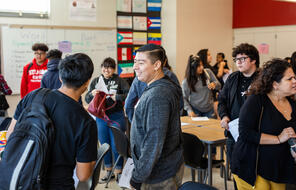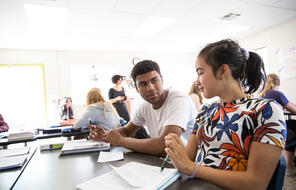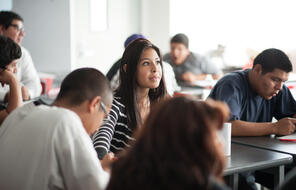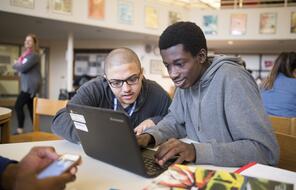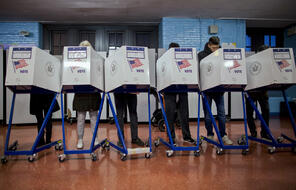
Exploring Political Diversity in Communities
Subject
- Civics & Citizenship
- Social Studies
Grade
6–12Language
English — USPublished
Get it in Google Drive!
Get everything you need including content from this page
Get it in Google Drive!
Get everything you need including content from this page
Overview
About This Activity
In this 20-minute activity, students explore the meaning of community and the nature of politically diverse communities. Communities are typically distinguished from groups by the fact that they share a common interest, background, or purpose that gives them a sense of cohesion. And yet, differences of opinion and political perspective are a natural element of most communities. Students will reflect on what challenges they think may arise in a community that includes people who have different political perspectives, as well as what opportunities may exist in such a context. They will consider what it takes to build and sustain a healthy community that sees value in each member.
How to Implement This Activity
- Prepare Students for the Activity
Let students know that their classroom community is in many ways a microcosm of democracy—it should be a place where explicit rules and democratic norms protect everyone’s right to speak; where different perspectives can be heard and valued; where members take responsibility for themselves, each other, and the group as a whole; and where each member has a stake and a voice in collective decisions. The teacher is responsible for safeguarding the community alongside their students.
Tell students that they are going to think about the idea of community, which can exist in their classroom, school, town or city, and the broader society. They will explore one definition of community as a way to think about how and why people form communities and what factors can cause communities to break down. Explain that communities are typically distinguished from groups by the fact that they share a common interest, background, or purpose that gives them a sense of cohesion. Although any collection of people can be called a group, not all groups could be called communities. You can also encourage students to consider their own definition of community in the activity that follows. (If you would like to spend more time exploring ideas of community, you can also use the What Is Community? lesson.) - Introduce the Big Paper
Students will complete a Big Paper: Building a Silent Conversation activity in small groups focused on this quote about community:
“Communities are not built of friends, or of groups with similar styles and tastes, or even of people who like and understand each other. They are built of people who feel they are part of something that is bigger than themselves: a shared goal or enterprise, like righting a wrong, or building a road, or raising children, or living honorably, or worshiping a god. To build community requires only the ability to see value in others, to look at them and see a potential partner in one’s enterprise.” —Suzanne Goldsmith, author
Inform the class that the first part of this activity will be completed in silence, with all communication done in writing. They will have time to speak in groups and as a class later. - Students Comment on Big Papers
Give each group a Big Paper and each student a marker or pen. You might give each student a different color to make it easier to see the back-and-forth flow of conversations. The groups should then read the quote in silence. After students have read, they are to comment on the text and ask questions of each other in writing on the Big Paper. Make sure students know that more than one of them can write on the Big Paper at the same time. You can determine the length of this step, but it should be at least five minutes.
If you have time, you can ask students to comment on other groups’ Big Papers. Still working in silence, students should leave their groups and walk around to read the other Big Papers. Students can bring their marker or pen with them and write comments or further questions for thought on other Big Papers. - Students Return to Groups and Discuss
Students then return to their group’s Big Paper, and silence is broken. The groups reassembled back at their own Big Papers should look at any new comments written by others. Now they can have a free verbal conversation about the text, their own comments, what they read on other papers, and the comments their fellow students wrote for them. - Debrief with a Class Discussion
Finally, debrief the process with the large group. The conversation can begin with a simple prompt, such as, “What did you learn from doing this activity?” This is the time to delve deeper into the content and use ideas on the Big Papers to draw out students’ thoughts. In particular, you can ask students what they learned about the nature of communities that include people with different political perspectives and the impact that such differences can have on the community. For example, you might ask:- What challenges do you think may arise in a community that includes people who have different political perspectives? What opportunities may exist in such communities?
- What do you think it looks like for a community to include people with different political perspectives?
- Journal Reflection
To close, ask students to reflect in their journals on one or more of the following questions:
- What do you think are some of the challenges of building a community? What do you think are some of the benefits?
- What do you think it takes to build and sustain a community?
- Think of an example of a community you are a part of. What are some ways you and the other members could work to see the value in each other?
Unlimited Access to Learning. More Added Every Month.
Facing History & Ourselves is designed for educators who want to help students explore identity, think critically, grow emotionally, act ethically, and participate in civic life. It’s hard work, so we’ve developed some go-to professional learning opportunities to help you along the way.
Exploring ELA Text Selection with Julia Torres
On-Demand

Working for Justice, Equity and Civic Agency in Our Schools: A Conversation with Clint Smith
On-Demand

Centering Student Voices to Build Community and Agency
On-Demand


